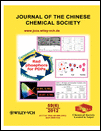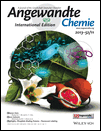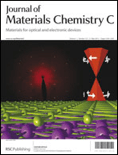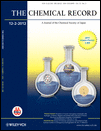
Aggregate
Scope & Guideline
Elevating scientific discourse across disciplines.
Introduction
Aims and Scopes
- Aggregation-Induced Emission (AIE):
AIE is a central theme of the journal, encompassing studies on the mechanisms, synthesis, and applications of AIE materials, particularly in fluorescence imaging, sensing, and therapeutic uses. - Nanomaterials and Nanotechnology:
Research on the synthesis, characterization, and application of nanomaterials, including their aggregation behaviors, is a consistent focus, aiming to advance their use in drug delivery, imaging, and energy conversion. - Biomedicine and Therapeutics:
The journal emphasizes the role of aggregates in biomedical applications, including drug delivery systems, photodynamic therapy, and diagnostic tools, highlighting the intersection of material science and health sciences. - Self-Assembly and Supramolecular Chemistry:
Explorations of self-assembly processes and supramolecular structures are fundamental, contributing to the design of novel materials and understanding of their functional properties. - Organic Electronics and Photonics:
Research on organic materials, particularly their aggregation behaviors and photophysical properties for applications in organic light-emitting diodes (OLEDs), solar cells, and sensors, is a key area of focus.
Trending and Emerging
- Multi-Functional Nanoparticles:
There is a growing trend towards the development of multifunctional nanoparticles that utilize aggregation-induced emission for enhanced imaging, targeting, and therapeutic applications. - Smart and Responsive Materials:
Research into stimuli-responsive materials that can change properties upon environmental triggers, such as pH or temperature, is gaining momentum, particularly in biomedical applications. - Machine Learning and Data-Driven Approaches:
The integration of machine learning techniques to optimize the design and synthesis of aggregates and nanomaterials is emerging as a significant trend, enhancing efficiency in material discovery. - Hybrid Systems Combining Organic and Inorganic Materials:
The exploration of hybrid systems that combine organic and inorganic components to leverage the benefits of both is increasingly popular, particularly in applications like photovoltaics and sensing. - Advanced Photonic Applications:
Research is expanding into advanced photonic applications, including novel light-emitting devices and sensors that utilize aggregation-induced emission for enhanced performance.
Declining or Waning
- Traditional Organic Photovoltaics:
Research specifically focused on conventional organic photovoltaic systems seems to be waning, as newer materials and hybrid approaches gain traction in the field. - Inorganic Nanomaterials without AIE Characteristics:
Studies centered on inorganic nanomaterials that do not incorporate AIE properties are becoming less frequent, indicating a shift towards more innovative materials that exhibit unique photophysical behaviors. - Basic Theoretical Studies on Aggregation:
While foundational studies remain important, there is a noticeable decline in purely theoretical papers, with a preference for experimental and applied research that demonstrates practical implications. - Conventional Drug Delivery Systems:
The focus on traditional drug delivery mechanisms is decreasing as interest shifts towards more advanced, aggregation-based systems that enhance targeting and efficacy. - Single-Component Systems:
Research on single-component systems without the incorporation of aggregation effects is less common, suggesting a trend towards more complex, multi-component systems that leverage aggregation for enhanced functionality.
Similar Journals

JOURNAL OF MOLECULAR MODELING
Connecting Researchers in the World of Molecular ScienceJOURNAL OF MOLECULAR MODELING, published by Springer, is a pivotal resource for researchers and professionals in the fields of chemistry, computer science, and molecular sciences. The journal's ISSN is 1610-2940, with an E-ISSN of 0948-5023, reflecting its commitment to disseminating cutting-edge research from 1996 to 2024. Although the journal does not operate under an Open Access model, it remains an invaluable platform for the publication of innovative studies related to computational methods, theoretical chemistry, and molecular simulations. With a notable categorization across multiple quartiles—including Q4 in Catalysis and Q3 in Computational Theory and Mathematics—the journal holds a distinct rank in Scopus, highlighting its influence and contribution to the discipline. The importance of this journal lies in its ability to bridge the gap between theoretical understanding and practical applications, making it essential reading for students and scholars seeking to advance their knowledge and research in molecular modeling.

JOURNAL OF THE CHINESE CHEMICAL SOCIETY
Exploring the Frontiers of Chemical ScienceJOURNAL OF THE CHINESE CHEMICAL SOCIETY, published by WILEY-V C H VERLAG GMBH, is a vital resource in the field of chemistry, focusing on a broad array of topics pertinent to general chemistry and its advancing sub-disciplines. Established in 1954 and running through 2024, this journal serves as a significant platform for the dissemination of high-quality research, showcasing innovative findings and developments within the chemical sciences. With its Q3 category ranking and positioning at Rank #203 in General Chemistry per Scopus, it reflects the journal's commitment to research excellence and impact. While not an open-access publication, it ensures accessibility to a global audience, making it an essential tool for researchers, professionals, and students alike seeking to stay informed and engaged in the evolving landscape of chemistry.

Molecular Systems Design & Engineering
Pioneering Research at the Intersection of Chemistry and EngineeringMolecular Systems Design & Engineering, published by the esteemed Royal Society of Chemistry, stands at the forefront of interdisciplinary research focused on the integration of molecular systems and engineering principles. With its ISSN 2058-9689 and a robust impact within various scientific domains, this journal not only facilitates the advancement of knowledge in fields such as Biomedical Engineering, Chemical Engineering, and Materials Chemistry, but also fosters collaborative innovations that address contemporary challenges in energy and manufacturing processes. Its recent rankings, including Q1 categorization in Critical areas of Chemical Engineering and Materials Chemistry, underscore its significance and influence within the scientific community, making it a vital resource for researchers, professionals, and students alike. Access options are available to meet diverse reader needs, encouraging wider dissemination of groundbreaking findings and methodologies that enhance the design and application of molecular systems.

ANGEWANDTE CHEMIE-INTERNATIONAL EDITION
Connecting Researchers with the Latest in Chemical ResearchANGEWANDTE CHEMIE-INTERNATIONAL EDITION, published by WILEY-V C H VERLAG GMBH, stands as a leading journal in the fields of Chemistry and Catalysis, holding a prestigious position with a Q1 ranking in both categories as of 2023. With an ISSN of 1433-7851 and an E-ISSN of 1521-3773, this esteemed publication has been an invaluable resource for the global scientific community since its inception in 1962. The journal's impact is further underscored by its remarkable Scopus rankings, where it occupies the 13th place among 408 journals in General Chemistry and the 4th place among 68 in Chemical Engineering - Catalysis, marking it in the 96th and 94th percentiles, respectively. Although it does not offer Open Access, ANEWANDTE CHEMIE-INTERNATIONAL EDITION remains essential for researchers, professionals, and students seeking to stay abreast of cutting-edge developments and innovations in chemical sciences. Its comprehensive scope and rigorous peer-review process ensure that only the highest quality research finds its way to publication, contributing significantly to the advancement of chemistry worldwide.

JOURNAL OF STRUCTURAL CHEMISTRY
Bridging Innovation and Tradition in Structural ChemistryThe JOURNAL OF STRUCTURAL CHEMISTRY, published by PLEIADES PUBLISHING INC, is a premier resource in the fields of Inorganic Chemistry, Materials Chemistry, and Physical and Theoretical Chemistry. Established in 1960, this journal has been providing a platform for groundbreaking research, facilitating the advancement of knowledge and innovation up to the year 2024. With an ISSN of 0022-4766 and an E-ISSN of 1573-8779, this journal strives to maintain high academic standards, as evidenced by its quartile rankings in 2023, where it ranks Q4 across various chemistry categories. While it currently does not offer open access, the journal's insightful articles are crucial for professionals and students seeking to enhance their understanding and expertise in structural chemistry. Subscribers can expect a comprehensive collection of peer-reviewed research, empirical findings, and theoretical discussions that contribute significantly to the scientific community. With its strong historical foundation and ongoing commitment to quality, the JOURNAL OF STRUCTURAL CHEMISTRY continues to be an essential resource for those passionate about the complexities of structural chemistry.

Cell Reports Physical Science
Fostering Collaboration for a Sustainable TomorrowCell Reports Physical Science is a leading open-access journal published by Cell Press, based in the United States, that has quickly established itself as a pivotal platform for the dissemination of research in diverse scientific fields. Launched in 2020, this journal focuses on advancing knowledge in areas such as Chemistry, Energy, Engineering, Materials Science, and Physics and Astronomy. With an impressive impact factor, it is ranked Q1 across all major categories, demonstrating its high relevance and influence in the academic community. Notably, it enjoys a remarkable reputation, reflected in its Scopus rankings, positioning it within the top tiers of its respective fields. As an open-access journal, Cell Reports Physical Science ensures that research is freely accessible, promoting collaboration and innovation globally. Researchers, professionals, and students are encouraged to submit their groundbreaking work to contribute to the ever-evolving conversation in physical sciences.

Journal of Materials Chemistry C
Transforming Ideas into Material SolutionsJournal of Materials Chemistry C, published by the renowned Royal Society of Chemistry, is a leading academic journal focusing on innovative research in the field of materials chemistry. With an impressive impact factor, this journal has solidified its status as a top-tier publication within its field, ranking in the Q1 category for both Chemistry (miscellaneous) and Materials Chemistry as of 2023. Positioned at the forefront of -materials science, it serves as a vital platform for researchers, professionals, and students to disseminate findings that highlight the synthesis, characterization, and application of advanced materials. The journal's open access model allows for broader readership and engagement, ensuring that groundbreaking research is accessible to a global audience. As a result, the Journal of Materials Chemistry C plays a crucial role in advancing the understanding and technology of materials, fostering collaboration and innovation within this dynamic scientific community.

ACS Organic & Inorganic Au
Unlocking Innovations in Organic and Inorganic ResearchACS Organic & Inorganic Au, published by the American Chemical Society, stands as a premier open-access journal dedicated to advancing the fields of organic and inorganic chemistry. Since its inception in 2021, this journal has swiftly risen to prominence, achieving a commendable Q1 classification in Inorganic Chemistry, Organic Chemistry, and Physical and Theoretical Chemistry as of 2023. With an ISSN of 2694-247X, it provides a vital platform for researchers, professionals, and students to disseminate their findings and engage with cutting-edge work across converged disciplines. Operating from its headquarters in Washington, DC, ACS Organic & Inorganic Au is committed to fostering a collaborative research environment, encouraging rigorous peer review, and ensuring the wide accessibility of high-quality scholarly articles. With its open-access model, readers worldwide can freely access and utilize research findings, promoting a global exchange of knowledge crucial for driving innovation in chemistry.

CHEMICAL RECORD
Pioneering Discoveries in Chemistry and BiochemistryThe Chemical Record is a prestigious peer-reviewed journal published by WILEY-V C H VERLAG GMBH, focusing on innovative research and developments across the diverse and evolving fields of chemistry and biochemistry. With an esteemed 2023 Impact Factor and recognized as a Q1 journal in several categories—including Biochemistry, Chemical Engineering, and Materials Chemistry—The Chemical Record stands as a critical resource for researchers, professionals, and students aiming to disseminate and acquire knowledge in these disciplines. The journal's engaging scope covers contemporary topics and fosters collaboration within the global scientific community, ensuring accessibility to cutting-edge research. By publishing articles that meet the highest standards of scholarship, it has earned a significant place within the academic ecosystem, as reflected in its strong Scopus rankings. Although The Chemical Record operates without open access, it remains deeply committed to advancing the field of chemistry through rigorous and impactful publications that bridge gaps between theory and practice.

Macroheterocycles
Fostering Global Collaboration in Chemistry DiscoveriesMacroheterocycles is a premier academic journal dedicated to the exploration and advancement of Analytical Chemistry and Organic Chemistry, published by the esteemed Ivanovo State University of Chemical Technology. Since its inception in 2008, this open-access journal has focused on providing a platform for innovative research and breakthrough discoveries in the field of heterocyclic compounds. With its current ranking in the Q3 quartile for Analytical Chemistry and Q4 quartile for Organic Chemistry, Macroheterocycles is rapidly establishing itself as a valuable resource for scientists, researchers, and students seeking to enrich their understanding of complex chemical structures and analytical techniques. Its comprehensive publication model ensures that the latest findings are accessible to a global audience, fostering collaboration and discourse in the scientific community. With ongoing contributions aimed at addressing contemporary challenges in chemistry, this journal is poised to make significant impacts in the field while encouraging the dissemination of knowledge within and beyond Russia.